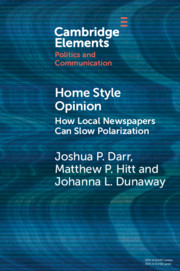Element contents
Home Style Opinion
Published online by Cambridge University Press: 31 March 2021
Summary
- Type
- Element
- Information
- Online ISBN: 9781108950930Publisher: Cambridge University PressPrint publication: 29 April 2021
References
6 References
- 22
- Cited by



